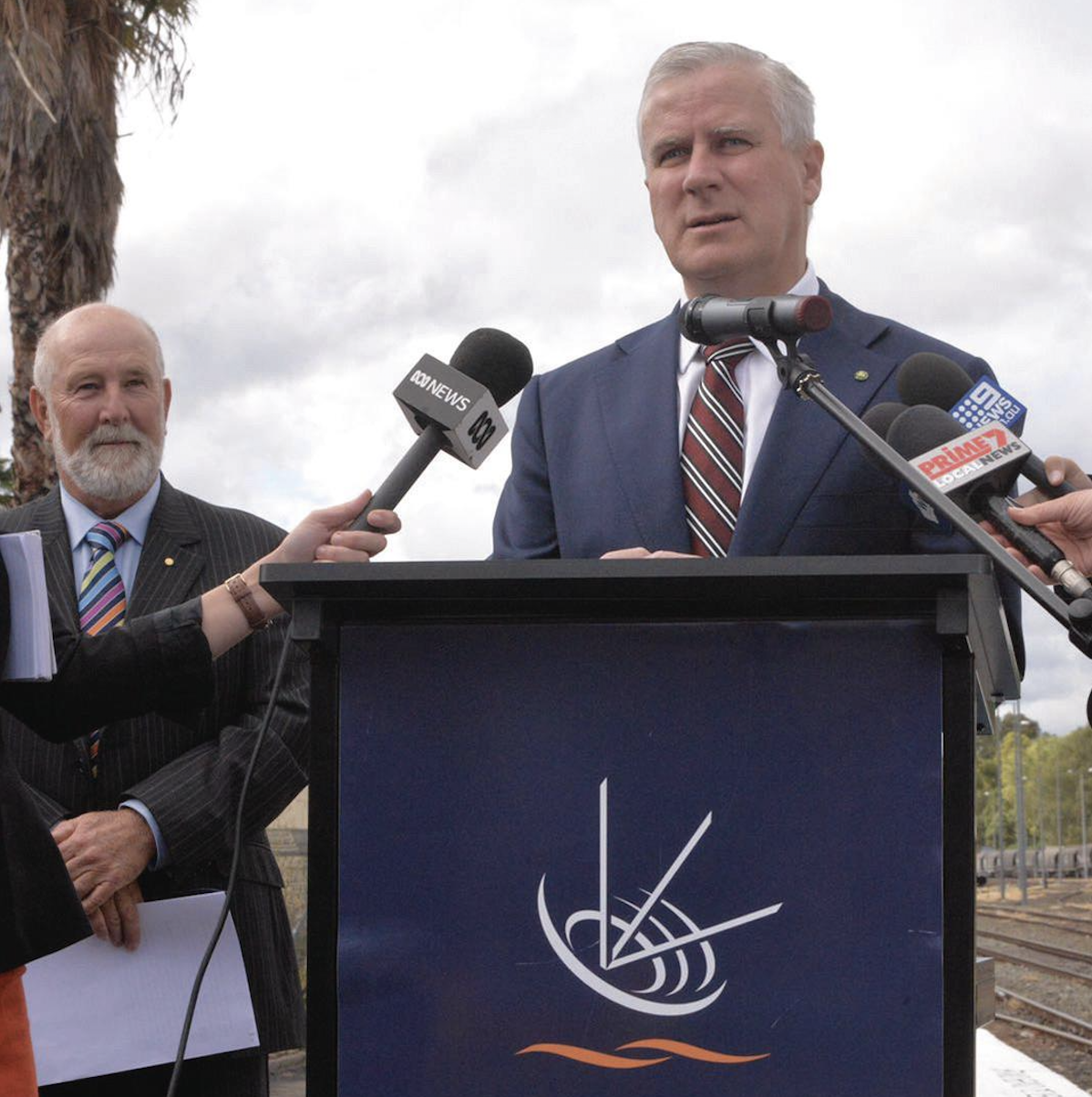QUESTION: Why is the Australian government constructing the Inland Rail?
ANSWER: Quite simply, it’s a nation-building infrastructure project that’s in the national interest. It will deliver vast productivity gains for our farmers and agribusinesses, while strengthening regional businesses and communities.
It will give our farmers greater capacity to access expanding, lucrative markets, such as those in the booming Asian region, more efficiently and at reduced freight costs. Talks will continue – such as the meeting I attended at the Gilgandra Shire Council on 22 June with Parkes MP Mark Coulton. This is the largest Commonwealth investment in a rail project in 100 years.
Q: Without a direct connection to the ports of Melbourne and Brisbane, can Inland Rail achieve freight efficiency? Are you considering a connection to the Port of Brisbane?
A: The 1,700km Inland Rail will deliver a freight service between Tottenham in Melbourne to Acacia Ridge in Brisbane through regional Australia that is cost-competitive with road.
It will build on existing rail connections to provide access to the ports of Melbourne, Port Kembla, Sydney, Newcastle, Brisbane, Adelaide and Perth. The Australian and Queensland governments are working together on a joint-funded $1.5 million study to assess the future requirements of a dedicated freight rail link between Inland Rail and the Port of Brisbane. Analysis as part of the Inland Rail Business Case found the existing line has capacity to service the Port until at least 2030.
Q: Would the government consider a farmer-friendly route from Narromine to Narrabri, reducing the impact of a 60m-wide rail corridor through productive farmland?
A: The Narromine to Narrabri study area for Inland Rail (mostly 2km-5km wide) announced in November 2017 was informed by years of research, including consultation with farmers. The final alignment will be set after the environmental impact assessment, which will take around two years. This will involve consultation with farmers and landholders to resolve issues including water flows and stock and machinery movements.
Q: Are freight forwarders and farmers being given equal consideration?
A: Yes. Upgraded and competitive rail services will enable regions to get their produce from paddock to port more quickly and efficiently, increasing regional productivity and boosting regional economies.
*For more information on overcoming supply chain challenges and streamlining business, read our story “From paddock to Asia, the brand smashing the supply chain”.
 The Deputy Prime Minister at an Inland Rail meeting in Parkes.
The Deputy Prime Minister at an Inland Rail meeting in Parkes.
Q: There is a new chair and a new CEO of ARTC. How do they plan to communicate with farmers?
A: Both Warren Truss, the new Australian Rail Track Corporation (ARTC) chair and Richard Wankmuller, CEO for ARTC Inland Rail, have made it a priority to meet and engage with communities, councils and farmers along the alignment, starting in NSW. Both the government and ARTC want to make sure local knowledge and experience is taken into account. Community input will be essential over the next few years and ARTC is establishing Community Consultative Committees where appropriate, to seek local input to assist in identifying the optimal rail corridor.
Q: Do you think there have been failures in the past to communicate with farmers?
A: Over the past three years in NSW alone the ARTC Inland Rail team has met with almost 3,000 people including with landholders on more than 1,500 occasions. I have made my expectations clear there is to be regular and meaningful engagement with landholders moving forward.
Q: Are there cost benefits to constructing a new line over the upgrading of an existing one?
A: To reduce community and environmental impacts, including those on landholders, the Australian government will take advantage of over 1,000km of existing line.
Ultimately, for Inland Rail to work, the 650km of missing track in the network between Melbourne and Brisbane needs to be built. This will ensure Inland Rail delivers what industry requires to move freight between Melbourne to Brisbane in less than 24 hours with 98% reliability, providing competitive pricing and freight that is available when the market wants it.
Inland Rail will be fully connected across the rail network allowing trains to seamlessly travel between Melbourne and Brisbane via Parkes and connect to Adelaide and Perth.
*Want to know more from the farmer’s perspective? Read ‘The great Inland Rail debate’ investigating why the existing rail corridor is being bypassed.